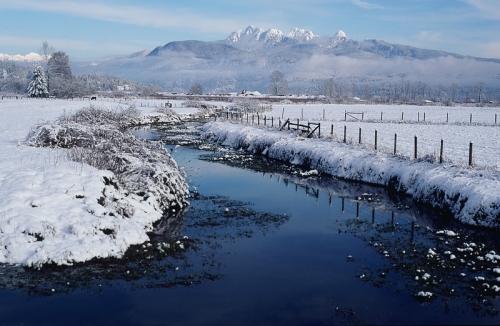Location: Southwestern British Columbia, near Stave Lake
Elavation: 2,262 metres
Range: Garibaldi Ranges, Coast Mountains
Candidate: #53
You could almost wish to leave this mountain off the list because it can be seen up close from a limited area that is mostly difficult to reach and climbing it is even more difficult, partly due to the “multi-modal” access, as Bivouac puts it. Yet this mountain deserves its candidacy, I believe, because it is a) very beautiful in form and appearance, b) a worthy challenge for those who do wish to climb it, c) a prominent peak both topographically (1,627 metres of prominence) and visually when viewed from other peaks in the Greater Vancouver Area, and d) its namesake is related to another beautiful and known mountain, Mount Robie Reid.
Mount Judge Howay – The Judge – is a spectacular twin-peaked mountain located at the far end of Stave Lake. Access is generally by canoe, crossing the lake, followed by hike up deactivated logging roads, next a fording of the Stave River, a bushwhack up through forest with cliff bands and rocky outcroppings, a ridge walk, and finally rock climbing to the summit. It’s a fair assumption that few actually attempt and reach either of the two summits, though its difficulty apparently taunt the minds of many climbers who are up for the challenge.
Originally know as the Snow Peaks, along with Mount Robie Reid, the mountain was named after judge and jurist, Frederic W. Howay, who was also a noted historian of British Columbia. He and his colleague Robie Reid, ran a law firm together from 1893 to 1906 before Howay was appointed to the bench. Both mountains were renamed in 1944.
For a detailed account of an ascent of the South Peak, go here.
Photos:
100 Mountains of Canada on Flickr
Resources:
Proposal for Golden Ears Provincial Park and Mount Judge Howay recreation area (offers details on the area)
